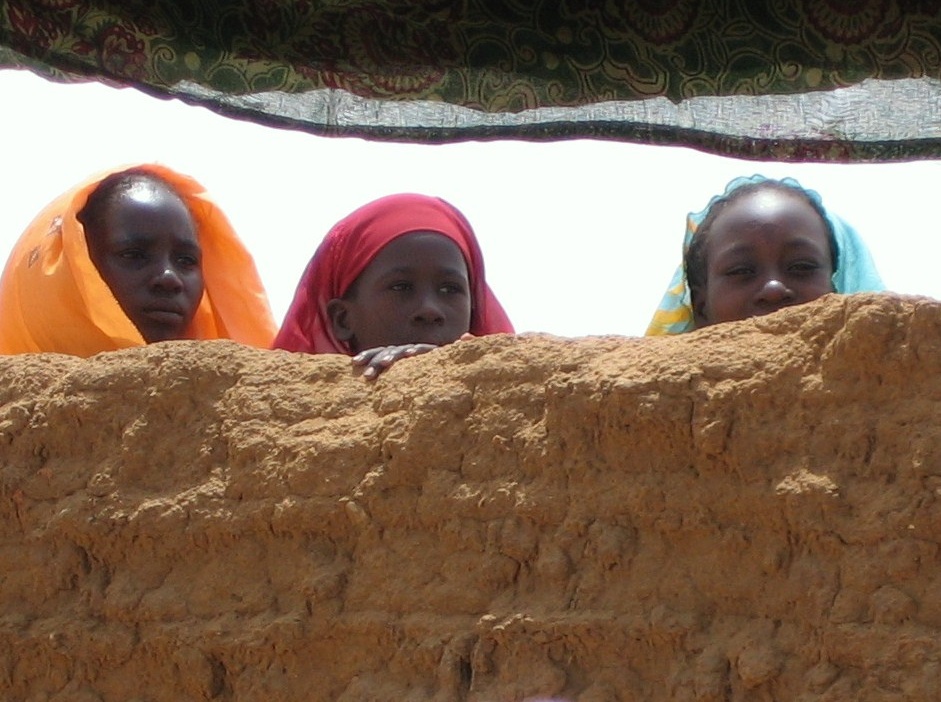
"We have been made promises time and time again" said Deng Arop, the chief administrator of Sudan's contested Abyei region, referring to the many unimplemented international agreements on the status of this area straddling what may soon be the border between North and South Sudan. "What options do the people of Abyei have left?" he asked me as he juggled incoming security updates on two cell phones.
In the past two weeks, clashes north of Abyei have left 33 people dead. Several buses full of southern Sudanese returning to vote in the south's self-determination referendum have been attacked on the road from Khartoum to Abyei, leading to road closures, which have generated food and fuel shortages in the town of Abyei. Moreover, an annual migration of people and cattle that typically leads to clashes between nomadic herdsmen and the area's year-round residents recently began. Exacerbating these immediate tensions is the looming question of whether Abyei will belong to the north or the south in the likely event that Sudan splits in two.
As southern Sudanese await the final referendum results, the people of Abyei find themselves in a precarious position. According to the 2005 peace agreement that ended the 22-year civil war between the Sudanese government in the predominantly Muslim north and rebels of the Sudan People's Liberation Movement (SPLM) in the mainly Christian and animist south, the residents of Abyei should have had their own referendum to decide if they would be part of the north or south. But political deadlock between the SPLM and Sudan's ruling National Congress Party (NCP) over who qualified as a resident of Abyei for voting purposes stopped the Abyei referendum from proceeding.
The internationally supported agreements made by the SPLM and the NCP on Abyei all tend to reinforce the position of the Ngok Dinka, a southern people who live year-round in Abyei. The Ngok Dinka contend that those who reside here permanently, and not the northern nomadic Misseriya who pass through the area seasonally, should determine whether Abyei is part of the north or south. The Ngok Dinka favor secession, so such an arrangement would almost certainly see Abyei become part of the soon-to-be- independent South Sudan. But the NCP, for its own political reasons -- namely, its need to keep the Misseriya on its side in the Darfur conflict, as well as speculation regarding untapped oil resources in the area -- is backing the Misseriya claim that Abyei must belong to the north. Unless Abyei's status is resolved soon, the area will be caught between two nations -- both of which claim ownership.
Abyei is currently in the midst of its dry season. No rain has fallen here since September. The parched earth is cracked and the town swirls with dust. Northern Misserya nomads are heading south to graze their cattle near a river (known as the Kiir River in Dinka and as Bahr al-Arab in Arabic), which runs south of Abyei town and is a rare source of water during the harsh dry months. For the Misseriya, whose livelihood depends on their cattle, access to this water is a matter of survival. The Ngok Dinka have promised the Misseriya continued grazing rights if Abyei goes to the south, but the Misseriya leader Sadig Babo Nimir, who spoke to me by phone from Khartoum, said this is not enough. He believes that the land itself must belong to the north. "If you take Abyei from us, you send us a death sentence."
The Ngok Dinka view the question of where Abyei belongs in similarly existential terms. Rou Manyiel, a Ngok Dinka civil society leader, pointed toward a tattered hand-drawn map of Abyei, telling me "You must see this to understand why we cannot give away one more inch of land." On the map, four horizontal lines moving progressively southward mark four phases of displacement of the Ngok Dinka. "We have been attacked, displaced, attacked, displaced, attacked, displaced, from 1964 onward," Manyiel explained.
In 1905, the British colonial rulers of Sudan transferred the area of the Ngok Dinka to the north. Under British rule, the area's nominal administrative association with the north had little impact. The Ngok Dinka and the Misseriya managed, as they always had, to coexist relatively peacefully. But after Sudanese independence in 1956, the administrative division of Sudan sparked a north-south civil war. Over the years, desertification and the encroachment of mechanized agricultural schemes have pushed the Misseriya farther and farther south in search of grazing land. Feeling increasingly anxious, the Misseriya became ripe targets for recruitment by Khartoum as proxies in the northern government's struggle to Islamize and Arabize the country's south.
Over the course of the first (1955-72) and second (1983-2005) civil wars, the Misseriya, armed by Khartoum, repeatedly attacked Ngok Dinka villages in pre-dawn raids characterized by murder, rape, abduction, and looting -- a pattern now familiar to many in the West who have read the testimony of Darfuri victims of the Janjaweed militias. In an effort to survive, the Ngok Dinka fled south.
Local leaders are now struggling to insulate the question of seasonal coexistence from the bigger questions about Abyei's future -- issues that have become intertwined. The Comprehensive Peace Agreement, which ended the war between the north and south in 2005, should have reduced Khartoum's motivation for arming the Misseriya. But recent reports by the Small Arms Survey indicate that Khartoum is "energetically recruiting" the Misseriya into militia training camps north of Abyei, and document the distribution of assault weapons, rifles, and mortars to Misseriya fighters. Khartoum is apparently becoming uneasy over the growing strength of the Justice and Equality Movement (JEM), a Darfuri rebel group. With the south of Sudan now on a seemingly unstoppable path to secession, Khartoum is focused on ensuring that it does not lose the west of the country (Darfur) as well.
During the first years of the Darfur conflict, Khartoum relied on proxies from within Darfur itself -- collectively referred to as the Janjaweed. This force consisted primarily of Arab nomads who were themselves marginalized and susceptible to recruitment on promises of land and loot. But as the conflict progressed, many grew frustrated with the NCP government for not delivering on its promises and came to feel that they had been manipulated. High-profile Janjaweed leaders began signing mutual non-aggression pacts with the JEM in 2006, and defections to the JEM followed. Now, the JEM is expanding to recruit Misseriya into its ranks to fight against the government in Darfur.
At first glance, the prospect of Misseriya fighters joining Darfuri rebels to battle Khartoum seems counterintuitive. Indeed, every Ngok Dinka person I have spoken to in Abyei has cited the NCP's refusal to implement the existing agreements on Abyei as evidence that Sudanese President Omar Hassan al-Bashir himself will go to war to support the Misseriya's claim to Abyei. But not all Misseriya agree. With its promise of an Abyei referendum, the 2005 peace deal opened up the possibility that Abyei would move from north to south. By signing the agreement, the NCP left many of the Misseriya nomads feeling betrayed. "I don't trust President Bashir," Nimir said. "He is the one who put us in this situation. He promised us Abyei would not go to the south. He is not a credible man." Nimir said that those Misseriya who are disillusioned with the NCP are now joining the JEM rebellion against the government in Darfur.
The NCP's efforts to win back Misseriya loyalty and slow defections to JEM may be hindering a resolution on Abyei. "It is because of the war in the west that the government needs the Misseriya to be on their side," says Ngok Dinka's paramount chief, Kuol Deng Kuol. "They are telling them that this land of Abyei is their land and giving them the arms to fight for it."
Oil deposits in Abyei, both actual and speculative, have long been a stumbling block as well. The 1972 Addis Ababa peace agreement, which ended the first Sudanese civil war, gave Abyei's residents the opportunity to vote to leave the north. But when oil was discovered here three decades ago, that proposed referendum was scuttled by Khartoum.
The same thing has happened with the recently promised Abyei referendum. By the time negotiations to end the second civil war became serious in 2002, oil in Abyei accounted for roughly 25 percent of Sudan's annual oil production, making Abyei such a sticking point that failure to agree on whether Abyei's riches would belong to the north or south seemed likely to derail the peace negotiations altogether. The U.S. proposal for an Abyei referendum -- letting the people decide themselves since the SPLM and NCP could not agree -- was enshrined in a separate protocol, allowing the rest of the negotiations to proceed.
Since then, a 2009 ruling from the Permanent Court of Arbitration in The Hague has defined Abyei's territory to exclude the major Heglig and Bamboo oil fields, leaving just one field, Diffra, up for grabs in Abyei. In theory, this should have calmed the dispute between the NCP and the SPLM, whose respective governments depend heavily on oil revenue to finance their budgets. In practice, it has not.
Last week, many locals in Abyei's marketplace told me stories of Chevron's oil explorations here more than three decades ago; they all believe that there must still be undiscovered oil here. "Why would Chevron have left markings on trees if there was no oil to come back for?" is a question I have been asked more than once when pushing to understand the pervasive conviction that Abyei is a latent cash cow.
International concerns about a lack of transparency across the oil industry in Sudan fuel mistrust of the data indicating that Abyei's sole productive oil field is far from oil-rich. "These production figures, that Diffra is in decline, they are fake figures," Arop said. Whether they are genuine is impossible to say for sure. But in the end, the reality of how much oil is located in Abyei has become less important than the perception, shared by politicians on both sides, that they are fighting over oil-rich land.
Following the recent violence, international mediators have pushed local and national actors to deal with the immediate flash points. Two weeks ago, the traditional chiefs held a meeting to agree on terms and conditions for the Misseriya's southern migration. Last week, government officials from both the north and south met to address the problem of insecurity on the road from the north down to Abyei. But these initiatives are merely placeholders that will lose their utility unless Abyei's fate is resolved before Sudan splits in two. If the uncomfortable status quo is left to fester until the south secedes, Abyei could trigger a return to war in Sudan.









